Review of Neon Genesis Evangelion: Death And Rebirth (Collector`s Special Edition)
Introduction
When it comes to Japanese animation and children`s entertainment, the one genre that leaves me cold, the one that has be diving for my remote control, is the giant mecha genre, typified by the endless permutations of Power Rangers episodes that used to inhabit Saturday morning television not too long ago. Utterly formulaic, they invariably required a bunch of teenagers who as well as spending their time at school, would lead secret lives where they piloted gargantuan robots that bestrode whole cities like a Colossus, and would do battle with the forces of evil (equally enormous) on a weekly basis. Once you`ve seen one, you`ve seen them all. Then in the mid nineties, Hideaki Anno took the genre, twisted it, rejuvenated it, and the result was the critically acclaimed Neon Genesis Evangelion. A bunch of fourteen year olds are selected as pilots of the Evas, to do battle against the invulnerable Angels, but that`s where the similarities end, for the Evangelion story is intricate, with a back-story rooted in Biblical mythology and certainly not for a Saturday morning audience. The plot is multi-layered, and the characters are complex and well drawn. Comparing Evangelion to Power Rangers is like comparing a gourmet meal to a hamburger.
Originally, Evangelion was a 26 part television series, but budgetary problems caused a decline in quality towards the end, disagreements with the broadcaster meant that the director`s vision for the series wasn`t brought to fruition. The final two episodes in the series weren`t received at all well. Happily, this was one of those instances where fan pressure was able to have an effect, and Hideaki Anno announced that an alternative ending would be released, remaking the final two episodes, The End Of Evangelion. To tide fans over while they waited, Death & Rebirth was also released. This was a two part movie, Death managed to condense the nine or so hours of television into around 70 minutes, serving as a recap of what had come before, while Rebirth was a half hour preview of End Of Evangelion, serving to whet appetites.
Death & Rebirth, and The End Of Evangelion had previously been released separately by Manga Entertainment, but have now been collected together in one handy luxury digipack for convenience. Those who are hoping for new versions of the discs will be disappointed in that, as far as I can tell the films are still non-anamorphic, indeed nothing seems to have been changed from the previous specification. Disc 1 of this three disc set contains Life & Death, while Disc 2 for some odd reason has the film repeated, minus the surround and Japanese soundtracks, but with a commentary and added extras. Finally Disc 3 has The End Of Evangelion. Life being what it is, I hadn`t seen any of the Evangelion television series prior to receiving this set for review, so I have had to dive into the metaphorical deep end, with nary a lifeguard in sight.
Death & Rebirth
In the year 2000, the Second Impact took place in Antarctica. An event on the scale of the first impact that wiped out the dinosaurs, managed to wipe out half of humanity in a matter of moments. It also heralded the appearance of the Angels, strange mystical beings, apparently intent on destroying what remained of humanity. These Angels project an AT (Absolute Terror) field that renders them impervious to conventional weaponry. There is a defence against them though, and in the rebuilt world of 2015, an organisation called NERV has developed EVA technology from the Angels themselves to protect humanity. The Evangelions are giant machines that can only be piloted by those children born in the aftermath of the Second Impact. Three teenagers, Shinji Ikari, Rei Anayami and Asuka Langley Sôryû pilot the three Evas that protect Tokyo 3 from the Angels that repeatedly attack NERV, intent on instigating the Third Impact and destroying humanity once and for all. Death serves to recap the first 24 episodes of Evangelion, and edits the key moments from the saga into a new set of narratives told from the viewpoints of the main characters, with the addition of new scenes and updated animation. Rebirth is a 30-minute taster of The End Of Evangelion, showing the beginning of the film.
The End Of Evangelion
On Disc 3, you`ll find the film proper split into the two final episodes in the Evangelion saga, Air and My Purest Heart For You. With the Angel menace apparently defeated, NERV is at something of a loose end, but another menace arises, as there are still sinister forces who want to control the Evas for their own ends. Soon NERV headquarters is under attack, and after their previous trials, the three Eva pilots are in no state to put up a defence. With everything falling apart, truths are revealed, and motives uncovered. Despite all that has occurred, the Third Impact seems closer than ever, indeed it`s not so much of a question of when it will occur, but who will instigate it. Finally, everything will become clear, but will it be too late?
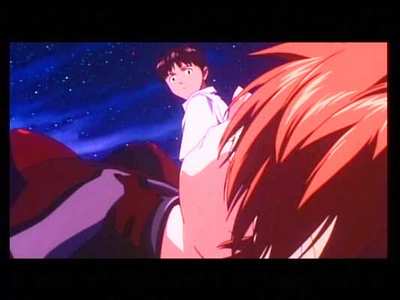
Video
Both films are presented in 1.85:1 letterbox format. As I have previously stated, this is how they were released originally and it is a shame that the opportunity wasn`t taken to brush up the presentation on these discs and give them anamorphic pictures. Death & Rebirth comes on two single layer discs, with the film repeated on both. Naturally there is the decreased resolution of the letterbox format, but the image quality isn`t too bad. Death is the most variable, containing cropped animation from the original television broadcasts as well as whole sequences that were created especially for the film. Blacks are a little washed out, but detail levels are good. When Rebirth starts, the image truly achieves cinematic quality.
The End Of Evangelion naturally mirrors this, with consistently stronger animation throughout. The image is sharp, clear and colourful although once again it is let down somewhat by the letterbox format. Incidentally, I love the credit sequences on both these films, they are absolutely gorgeous to look at, and the DNA themed sequence in the middle of The End Of Evangelion is original to say the least.
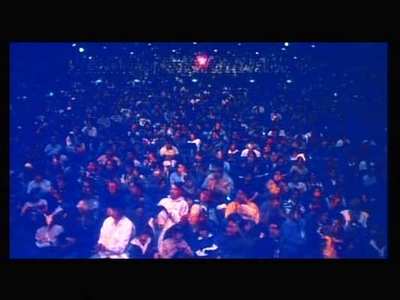
Audio
There is a multitude of sound options on the discs. Death & Rebirth makes do with DD 5.1 and DD 2.0 English, as well as DD 2.0 Japanese (Disc 2 has the film with a DD 2.0 English track only), while The End Of Evangelion has a choice of DTS 6.1 Japanese and English, DD 5.1EX English and Japanese, as well as vanilla DD 2.0 Stereo Japanese and English.
As per usual, I stuck with Japanese for both films. Death & Rebirth has an adequate Stereo track, and what I sampled of the Surround track certainly seemed effective, with good use of the surrounds to convey plenty of action. The subtitles were just about zoom friendly, losing a pixel or two below the screen. There are occasions when they flash by too fast to read, but this mirrors the quick flashing Kanji that punctuates the narrative and that they are supposed to translate.
The End Of Evangelion was a punchier affair, with good vibrant use of the surrounds echoing the gargantuan battles on screen. The subtitles were better placed on this disc, as well as in a font that was easier on the eye. Both films make extensive use of classical music to great effect, matching the epic nature of the story.
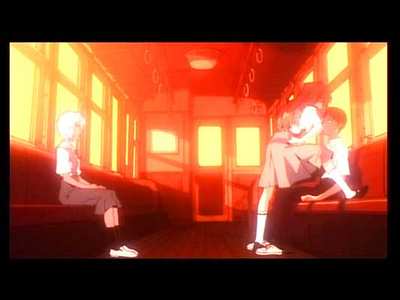
Features
The three discs are presented in foldout digipack that comes inside a slipcase with some atmospheric artwork. There is also a small holder that I assume will hold Chapter headings and the like, although on my review set this slot was vacant. All discs some with impressive menu design and animated menu screens.
The extras for Death & Rebirth come on Disc 2.
The Magi Archives are a neat, and useful glossary for the names, characters and terminology used in Evangelion. This ties in neatly with the Mokuji Interactive feature that you can access while watching the film on Disc 2. It`s a sort of white rabbit option that appears with a list of topics associated with the action on screen. Select the topic and you`re taken to a screen from the Magi Archives that supply you with the relevant information. (There are also a couple of screens that you can access via the Mokuji feature that aren`t in the Magi Archives)
There is a small photo gallery with 16 pictures from the film. There are also trailers for this film, The End Of Evangelion and other Manga releases.
Finally there is the commentary. Director of the English dub Amanda Winn Lee, producer Jason C. Lee and voice artist Taliesin Jaffe contribute. Naturally they talk about the dubbing process, but they also add a decent bit of background to the film, and point out some of the subtler points of the story. They keep the track light and enjoyable to listen to, and it`s an essential addition to the film.
The same three people also comment on The End Of Evangelion, in an equally worthy track, but other than that and some trailers, that disc is lighter on extras.
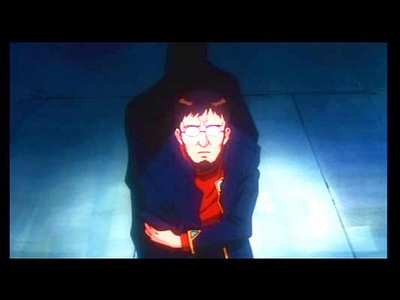
Conclusion
Evangelion is certainly a complex and rewarding experience, full of rich rounded characters and a powerful story. However building on 24 prior episodes and attempting to fashion a conclusion that will reward fans of the series means that this is probably the wrong place to start for newcomers to Evangelion. Not too long ago, Farscape: The Peacekeeper Wars was released, a miniseries made for the fans, at the behest of the fans, and it`s fair to say that anyone watching that disc as an introduction to the Farscape universe would be lost. The End Of Evangelion is a film made in similar circumstances and I fully expected to be just as lost with this title. However Death & Rebirth goes some way to redressing the balance. Death is a 70-minute recap; it is a re-edited collection of highlights of the first 24 episodes, some 9 hours compressed by a factor of ten. Yet in narrative structure it`s hardly easy to follow, a collection of flashbacks, narrations, presented in terms of character rather than chronology, it`s held together with the device of a music rehearsal. It is difficult to follow, but also is rewarding in that it makes you work to catch up, and gets you caring about the characters where a simple chronological retelling wouldn`t have. Also essential with this film are the Magi Archives, a fairly detailed glossary of what Evangelion is all about and with some insight into the earlier episodes. The commentary turns out to be indispensable as the speakers fill in whatever gaps remain, and clarify the relationships and the histories of the characters. While Rebirth is the first half hour of The End Of Evangelion, it actually complements Death well, and it`s well worth watching the two in context.
As I have stated, this was my first experience with Neon Genesis Evangelion, and I felt a little like I was jumping into the deep end. Death & Rebirth went some way towards redressing that though, and subsequently I found watching The End Of Evangelion and satisfying and entertaining experience. It`s structured more conventionally, and I found that I cared about the main characters despite only a short acquaintance with them. As with any story with roots in biblical legends and tales translated to a contemporary setting, you`ll find wheels within wheel and hidden motives, and the conspiracies that are revealed in these final two episodes would make an X-Files episode look like child`s play in comparison. I think that biblical references add a dimension to any story, especially when used well. I`m thinking particularly of The Omen, a film that chilled me to my very core, when I`m usually dismissive of horror films. Similarly the referencing of Angels and objects like The Lance Of Longinus, the revisiting of the Creation myth and The Apocalypse add dimension to an already compelling story.
For once the characters make sense in their setting. The idea of teenaged superheroes is usually hard to accept, especially as they stride around landscapes in giant mechas, but the teenagers in Evangelion are flawed, damaged individuals with fractured psyches. It`s apparent even from the explosive and action packed finale that these shows were rarely about the eye-candy but more about the characters and the way they relate to one another. It`s telling that the denouement of the film is dependent on character rather than pyrotechnics, though to tell more would involve spoilers.
In the final analysis, while I enjoyed Death & Rebirth and The End Of Evangelion, I`m still left with reservations. Death & Rebirth is a difficult film to watch, and useful as an exposition device. But as entertainment it lacks a little something. Also while it does a sterling job in getting the viewer caught up to the Evangelion storyline, there is no denying that you are still missing out on the character interactions and dynamics of the television series. In short, it`s simply no substitute. The End Of Evangelion is a more rewarding experience, as it doesn`t have to recap what has come before, and simply tells a story. It`s a story that rewards fans of Evangelion, but newcomers may find themselves out of their depth.
This Special Edition of the Neon Genesis Evangelion movies will be an essential purchase for fans that haven`t already bought the films separately, if there are any such fans. For newcomers to Evangelion, it may turn out to be a more expensive purchase than they first thought, as they`ll probably soon want to see the television series as well.
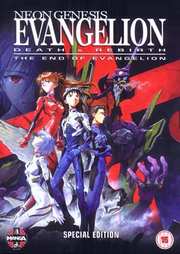
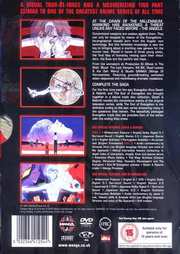




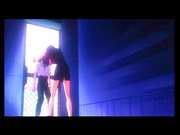
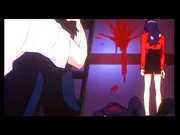
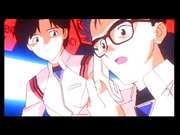
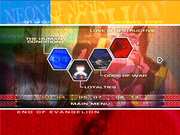
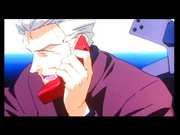
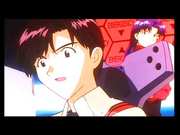

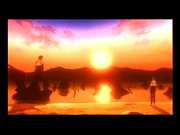
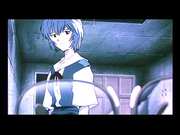
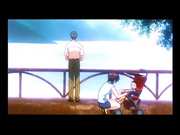
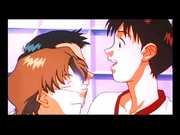
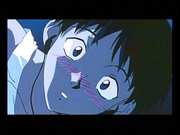
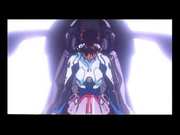
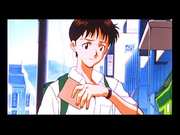
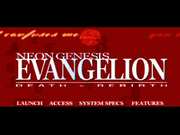
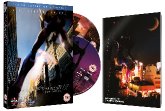































Your Opinions and Comments
Be the first to post a comment!